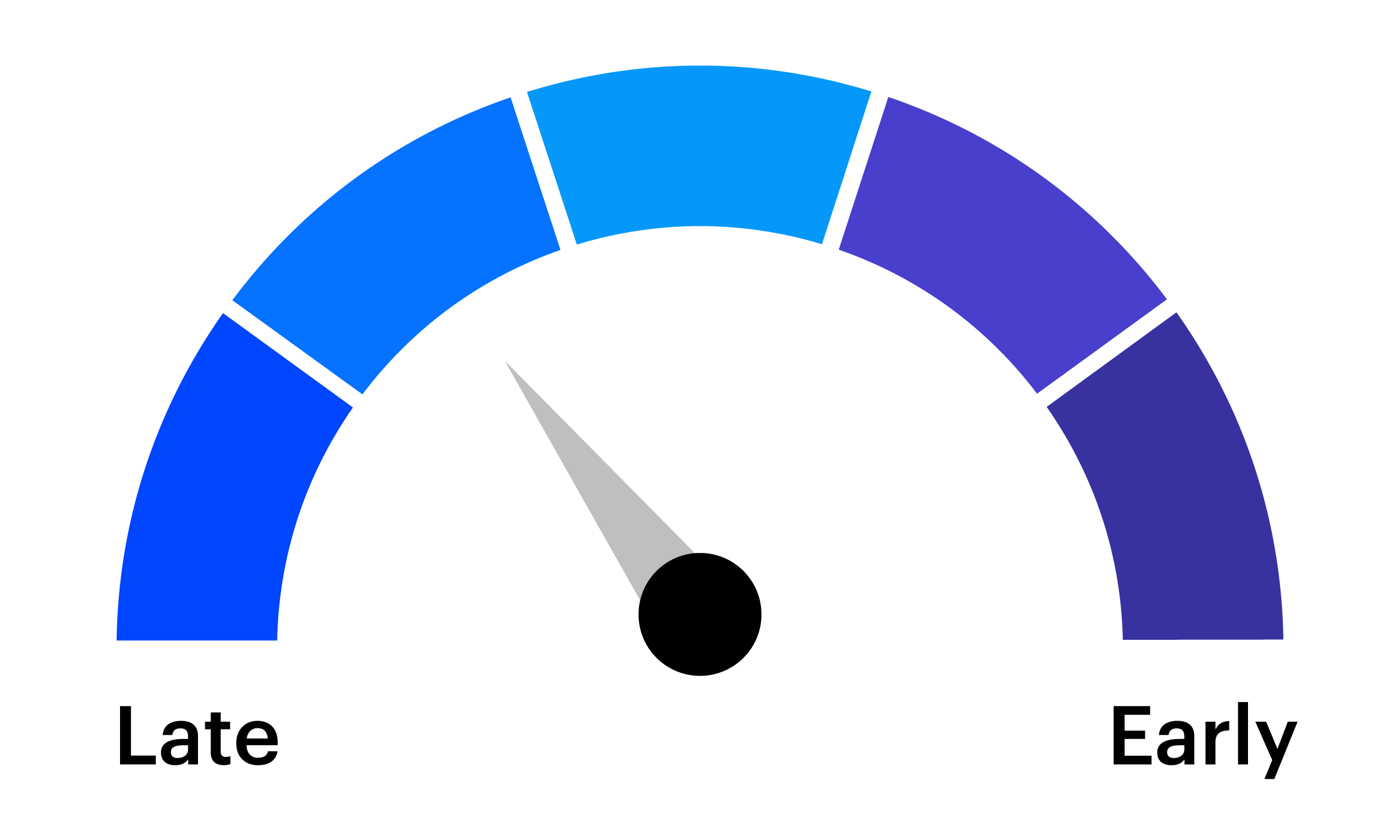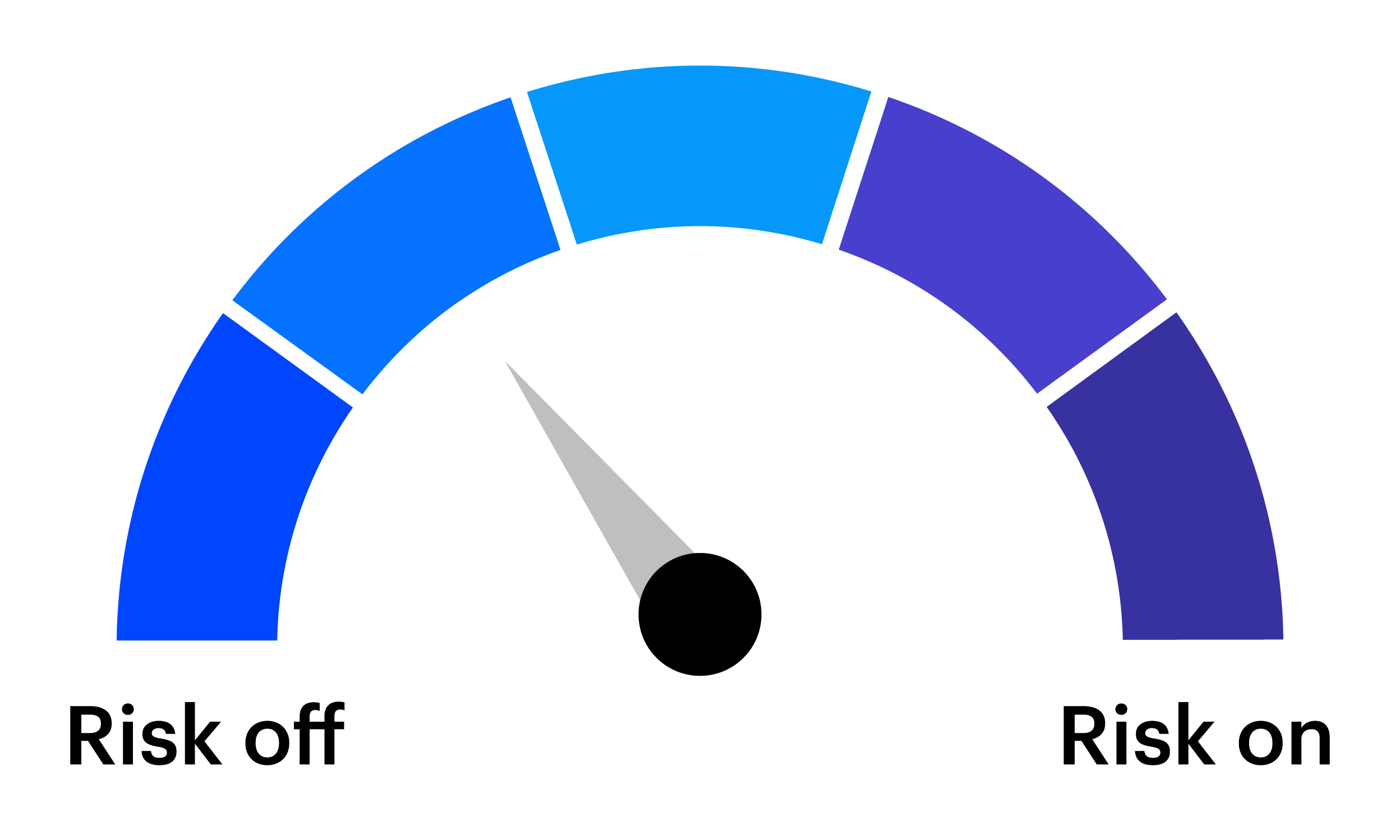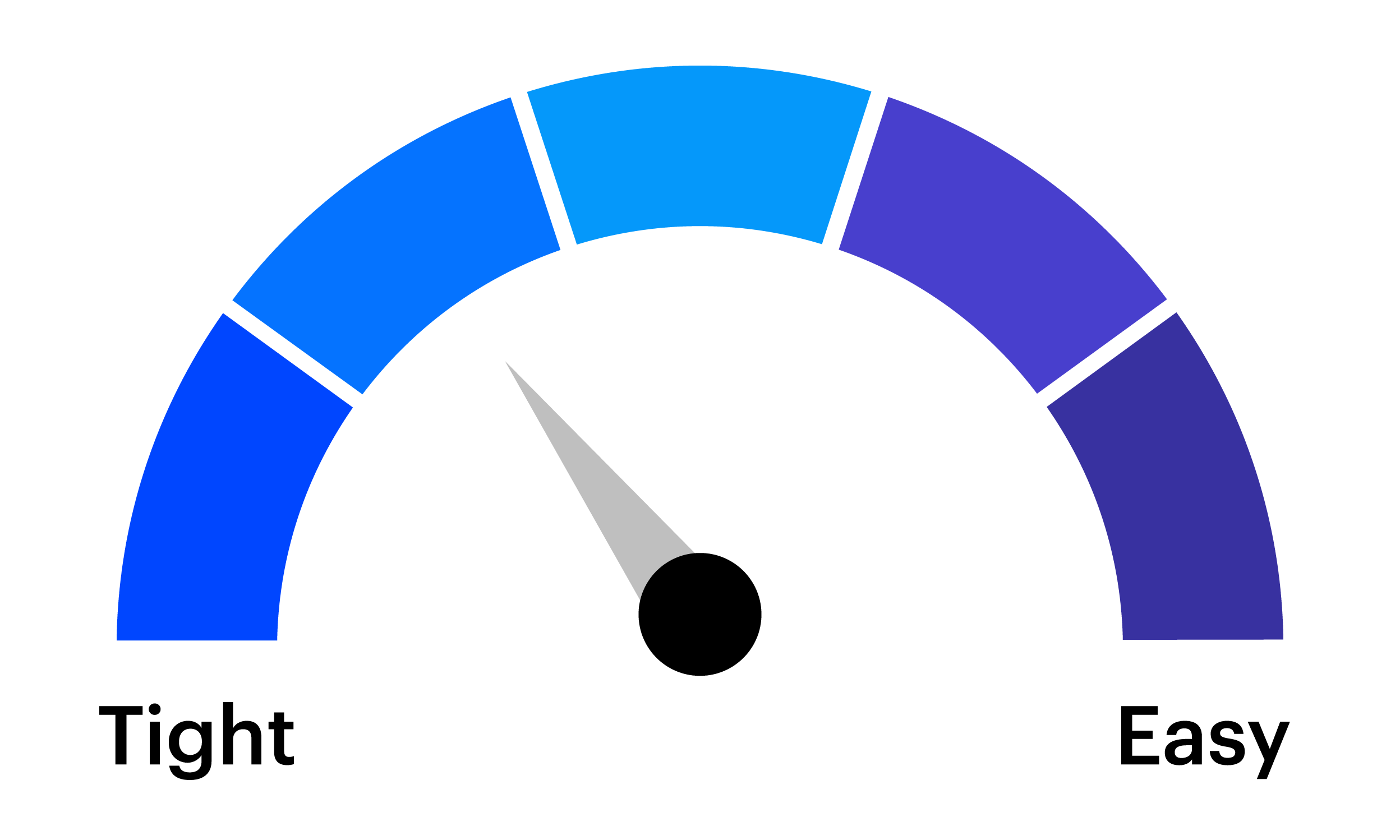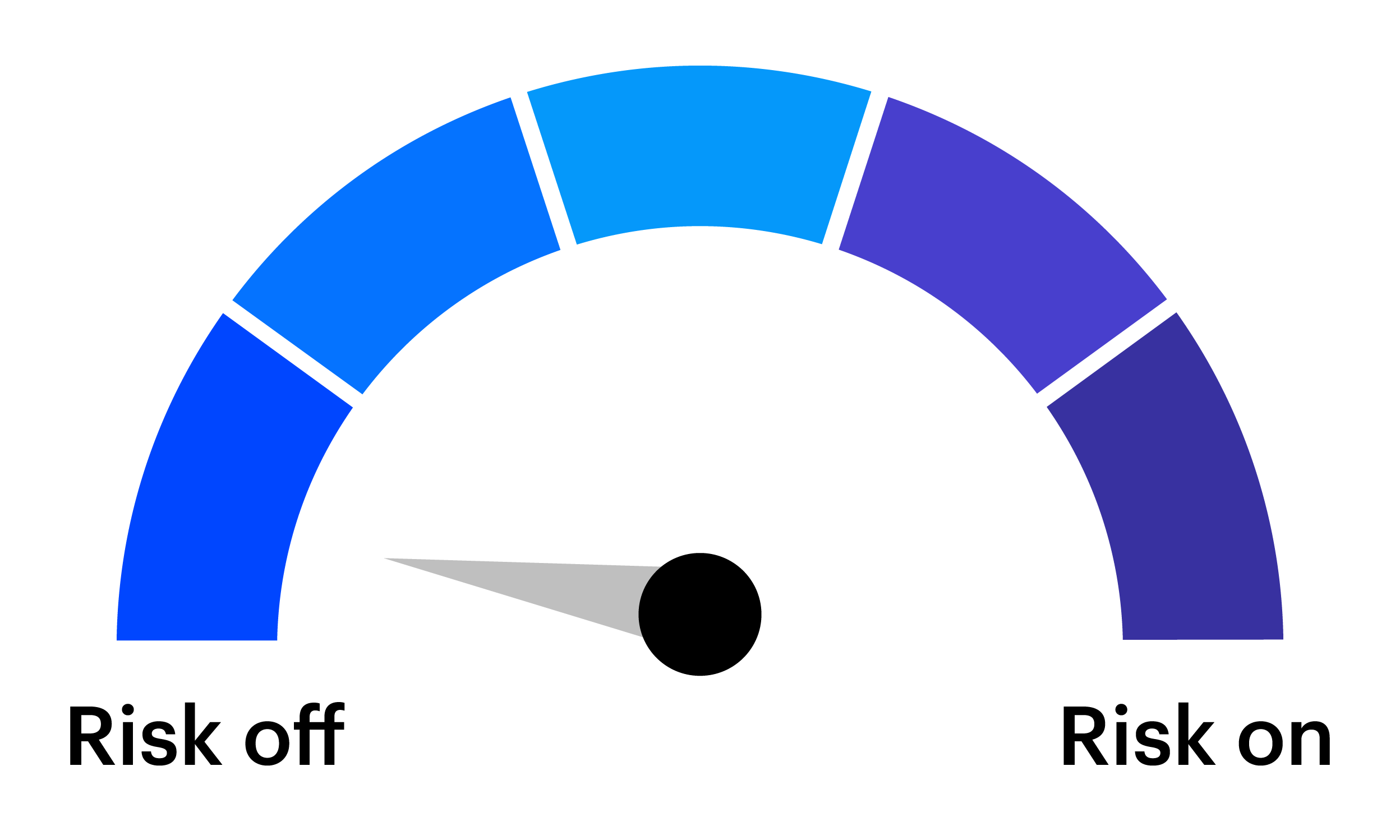
Markets and Economy US stocks bear the brunt of global economic uncertainty
The global economic outlook is uncertain, yet European, UK, Chinese, and Japanese stocks all rose last week while US stocks fell.
Investors were hoping for clarity on Liberation Day but instead got an escalation of the trade conflict. US leading indicators have softened, led by significant weakness in business and consumer sentiment surveys, negatively impacted by higher global tariffs and persistent policy uncertainty.
Global risk appetite continues to weaken, as global stocks underperform bonds year-to-date and credit spreads widened across all fixed income sectors over the past month.
Our systematic macro framework remains in a contraction regime, even as leading economic indicators improve across regions. We’re maintaining defensive portfolio positioning, favoring bonds over stocks, and underweighting credit risk. We’re overweight low volatility and quality stocks and staying neutral developed ex-US stocks relative to US stocks.









A challenge for tactical investors is preparing for the expected and anticipating the unexpected. The tactical asset allocation (TAA) framework from the Invesco Solutions team is designed to enhance a long-term strategic asset allocation (SAA) by making portfolio tilts based on near-term market views.
The tactical, dynamic factor rotation shown below is also utilized in the Invesco Russell 1000® Dynamic Multifactor ETF (OMFL).
The Invesco Solutions team develops portfolios for client-oriented outcomes over multiple time horizons. Our tactical asset allocation (TAA), regime-based framework dynamically adjusts exposures to asset classes, regions, sectors, and factors, to create multi-asset portfolios designed for the prevailing macroeconomic environment. Strategic asset allocation (SAA) positioning is derived from our rigorous investment process, which consists of long-term capital market assumptions (CMAs), portfolio optimization, and risk management.
The Invesco Solutions team develops portfolios for client-oriented outcomes over multiple time horizons. Our tactical asset allocation (TAA), regime-based framework dynamically adjusts exposures to asset classes, regions, sectors, and factors, to create multi-asset portfolios designed for the prevailing macroeconomic environment. Strategic asset allocation (SAA) positioning is derived from our rigorous investment process, which consists of long-term capital market assumptions (CMAs), portfolio optimization, and risk management.
The Invesco Solutions team develops portfolios for client-oriented outcomes over multiple time horizons. Our tactical asset allocation (TAA), regime-based framework dynamically adjusts exposures to asset classes, regions, sectors, and factors, to create multi-asset portfolios designed for the prevailing macroeconomic environment. Strategic asset allocation (SAA) positioning is derived from our rigorous investment process, which consists of long-term capital market assumptions (CMAs), portfolio optimization, and risk management.
Explore further research and analysis from our market and investment experts.

The global economic outlook is uncertain, yet European, UK, Chinese, and Japanese stocks all rose last week while US stocks fell.

While stock market volatility can be unsettling in times of uncertainty, remembering these things can help you weather the storm.

Six things to watch in the coming weeks, including US Treasury yields, US and European sentiment, US earnings outlook, and Chinese economic data.
NA4377049
Class Y shares are closed to most investors. Please see the prospectus for more details.
Tightening is a monetary policy used by central banks to increase interest rates to slow economic growth and curb inflation.
Investments focused in a particular sector, such as technology, are subject to greater risk, and are more greatly impacted by market volatility, than more diversified investments.
Learn more about the MMI/Barron’s Industry Awards. You are leaving for another site that is not affiliated with Invesco. This site is for informational purposes only. Invesco does not guarantee nor take any responsibility for the content.
This does not constitute a recommendation of any investment strategy or product for a particular investor. Investors should consult a financial professional before making any investment decisions.
Past performance does not guarantee future results. An investment cannot be made directly into an index.
All investing involves risk, including the risk of loss.
Some products are offered through affiliates of Invesco Distributors, Inc.
The opinions referenced above are those of the author as of February 2025. These comments should not be construed as recommendations, but as an illustration of broader themes. Forward-looking statements are not guarantees of future results. They involve risks, uncertainties, and assumptions; there can be no assurance that actual results will not differ materially from expectations.
Tightening is a monetary policy used by central banks to normalize balance sheets.
There are risks involved with investing in ETFs, including possible loss of money. Index-based ETFs are not actively managed. Actively managed ETFs do not necessarily seek to replicate the performance of a specified index. Both index-based and actively managed ETFs are subject to risks similar to stocks, including those related to short selling and margin maintenance. Ordinary brokerage commissions apply. The Fund's return may not match the return of the Index. The Fund is subject to certain other risks. Please see the current prospectus for more information regarding the risk associated with an investment in the Fund.
Growth stocks tend to be more sensitive to changes in their earnings and can be more volatile.
A value style of investing is subject to the risk that the valuations never improve or that the returns will trail other styles of investing or the overall stock markets.
Stocks of small and mid-sized companies tend to be more vulnerable to adverse developments, may be more volatile, and may be illiquid or restricted as to resale.
Fixed-income investments are subject to credit risk of the issuer and the effects of changing interest rates. Interest rate risk refers to the risk that bond prices generally fall as interest rates rise and vice versa. An issuer may be unable to meet interest and/or principal payments, thereby causing its instruments to decrease in value and lowering the issuer’s credit rating.
The yield curve plots interest rates, at a set point in time, of bonds having equal credit quality but differing maturity dates to project future interest rate changes and economic activity.
Credit spread is the difference between Treasury securities and non-Treasury securities that are identical in all respects except for quality rating.
Alternative products typically hold more non-traditional investments and employ more complex trading strategies, including hedging and leveraging through derivatives, short selling and opportunistic strategies that change with market conditions. Investors considering alternatives should be aware of their unique characteristics and additional risks from the strategies they use. Like all investments, performance will fluctuate. You can lose money.
The risks of investing in securities of foreign issuers, including emerging market issuers, can include fluctuations in foreign currencies, political and economic instability, and foreign taxation issues.
Junk bonds involve a greater risk of default or price changes due to changes in the issuer’s credit quality. The values of junk bonds fluctuate more than those of high quality bonds and can decline significantly over short time periods.
In general, stock values fluctuate, sometimes widely, in response to activities specific to the company as well as general market, economic, and political conditions.
Municipal securities are subject to the risk that legislative or economic conditions could affect an issuer’s ability to make payments of principal and/ or interest.
An investment in emerging market countries carries greater risks compared to more developed economies.